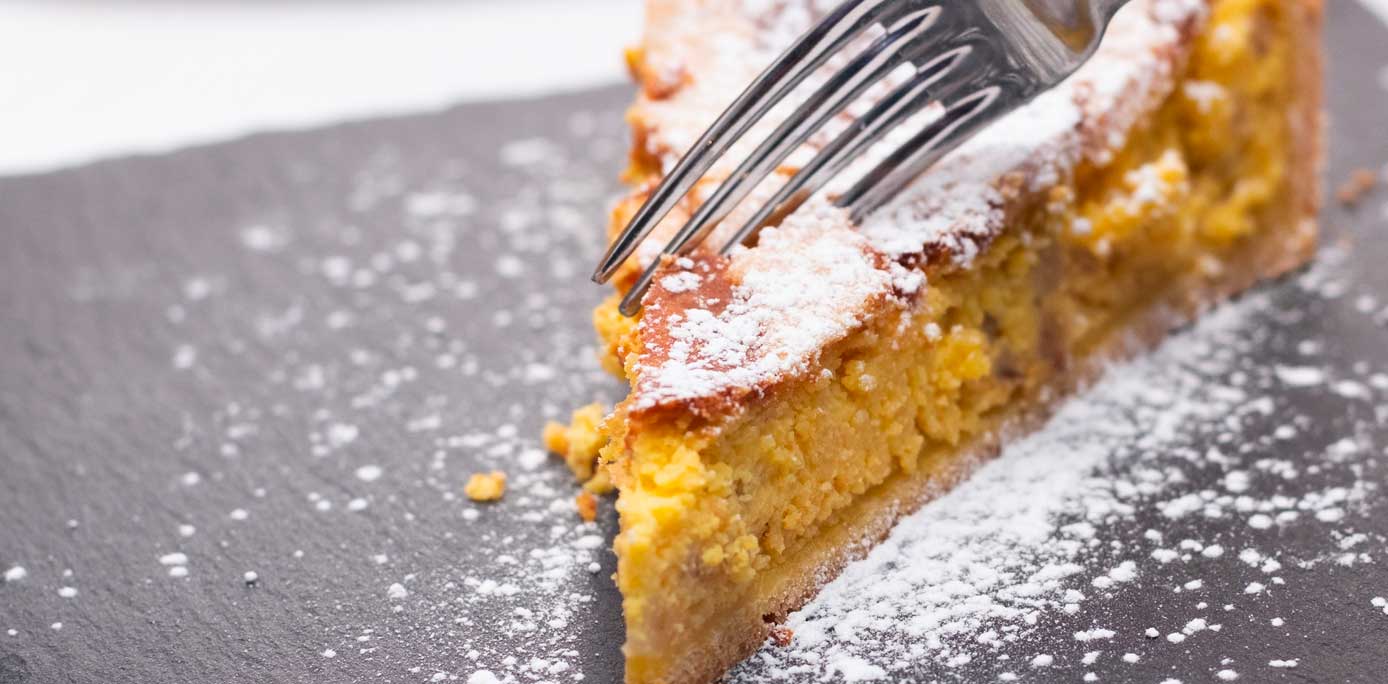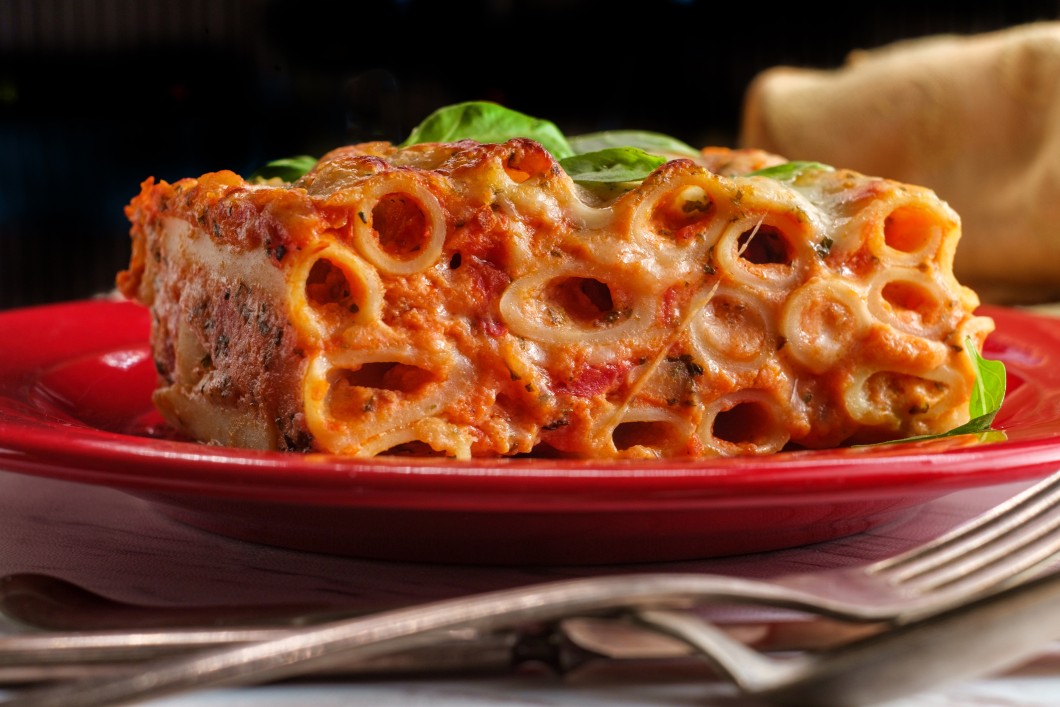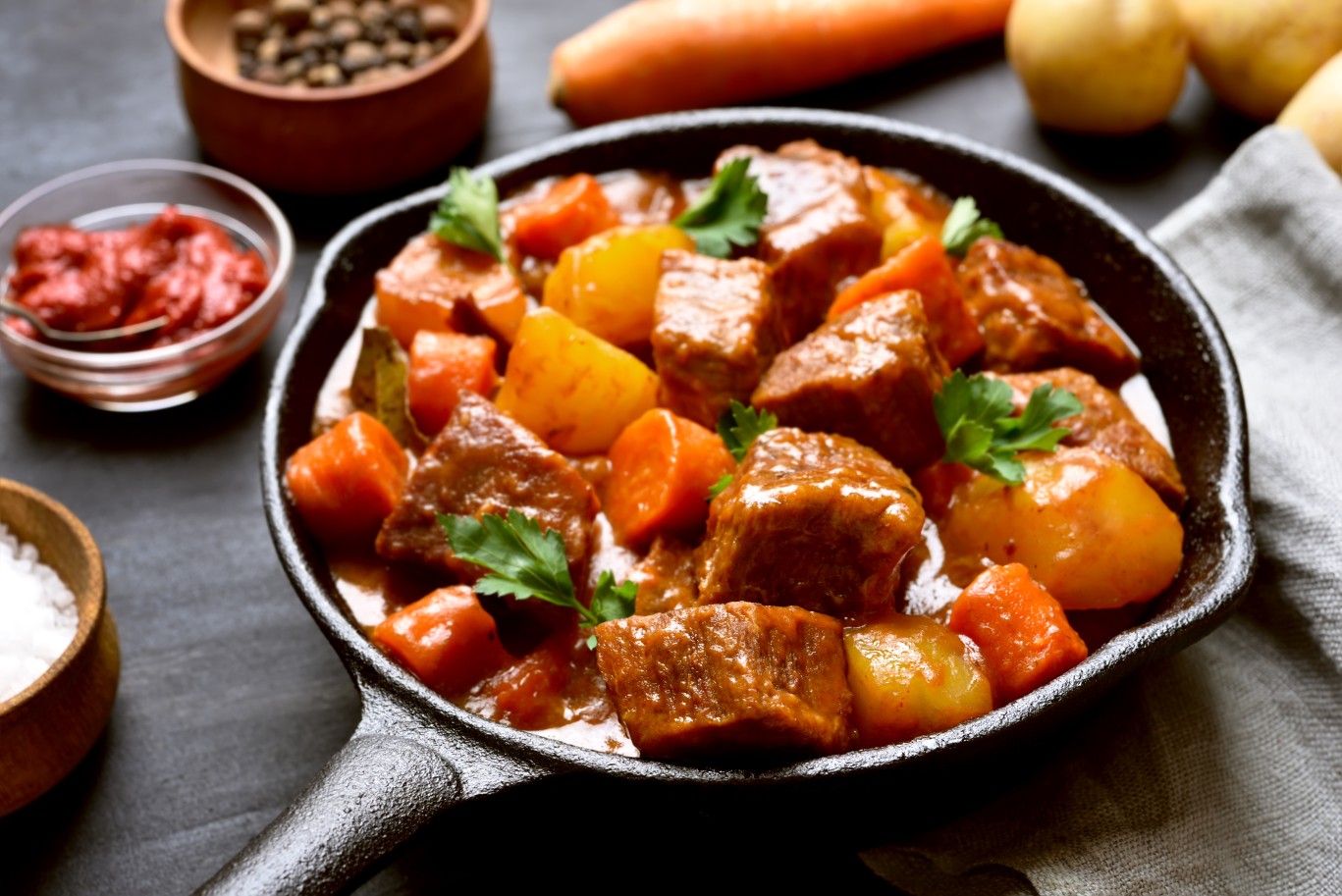It’s not Easter quite yet, but it doesn’t mean we can’t have a chat about pastiera — the most traditional Neapolitan Easter dessert — and learn how to make it!
This wheat berry and ricotta pie is wonderfully perfumed with orange blossom water, cinnamon and candied fruits, a kind of non plus ultra version of the everyday ricotta cheesecake.
Pastiera is not particularly difficult to make, but it does require some “exotic” ingredients you’re not likely to find in a typical supermarket outside Italy, namely grano cotto (pre-cooked wheat berries) and orange blossom water. Candied fruits can also be hard to come by.
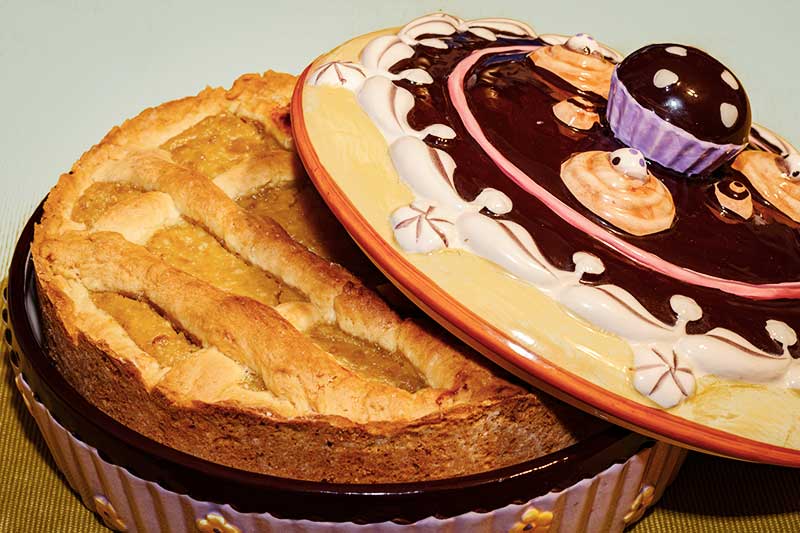
But there are sources and work arounds. (See notes for details).
A proper pastiera also requires some patience. Customarily, you start making it on Good Friday, when you prepare the filling and let it rest overnight. On Saturday, you actually make and bake the pastiera and let it rest overnight, before digging into it on Easter Sunday. Of course, you can do it all in one day, but I would still try to make your pastiera the day before, or at least in the morning for consuming in the afternoon. The rest really does improve the flavor.
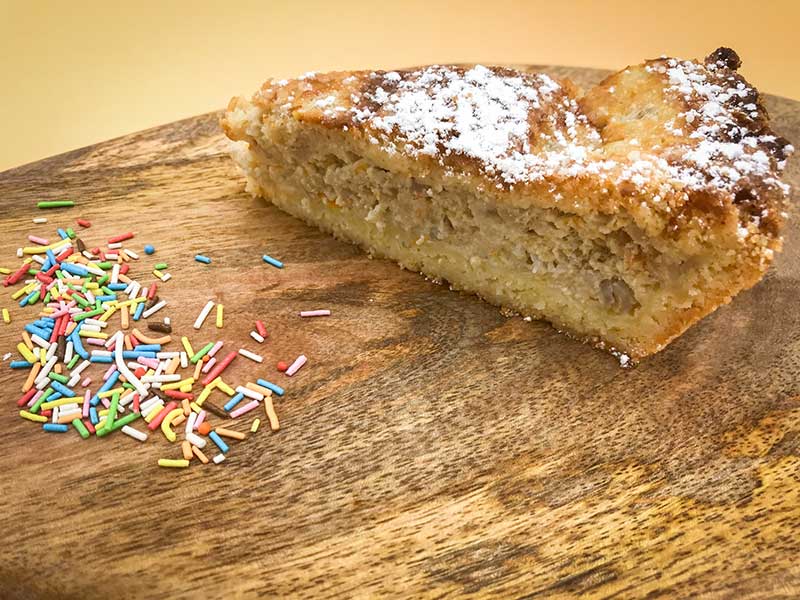
Ingredients
Makes one pastiera
For the grano cotto:
- 1 550g jar of grano cotto (or pre-boiled wheat berries or barley, see Notes)
- 250 ml (1 cup) milk
- A heaping spoonful of sugar
- Zest of 1/2 orange
- A drop of vanilla extract
- A knob of lard or butter
For the ricotta cream filling:
- 400g (or one 15 oz container) ricotta cheese
- 150-200g (5-7 oz) sugar, or more to taste
- 3 eggs
- A pinch of cinnamon
- A few drops of vanilla extract
- A few drops of orange blossom water, to taste
- 75-100g (2.5-3.5 oz) candied orange and/or citron peel
For the crust:
- 300g (10-1/2 oz) “OO” flour (or pastry flour)
- 75g (2.5 oz) sugar
- 150g (5 oz) lard (or butter)
- 3 egg yolks
For serving:
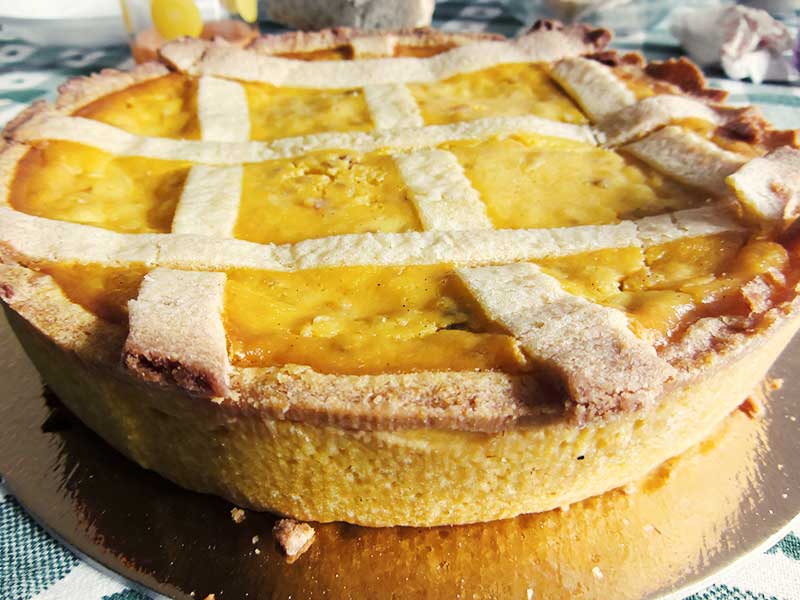
Directions
COOK THE GRANO COTTO:
Add the grano cotto to a saucepan, along with the other indicated ingredients, over low heat. Bring to a simmer and cook, stirring frequently, until the mixture turns creamy and porridge-like, usually about 5-10 minutes. Turn off the heat and let the mixture cool completely.
MAKE THE FILLING:
Pour the ricotta into a large mixing bowl. Add the sugar and whisk vigorously until the sugar is well incorporated and the mixture is rather fluffy. Mix in the eggs as well, one by one. Now add the cooled grano cotto, folding it into the ricotta cream until well incorporated. Add the cinnamon, vanilla and a few drops of orange blossom water. Taste and adjust the seasoning. Add more orange blossom water if you want a more perfumed filling, taking note that its intensity will lessen in baking. If you have the time, let this mixture rest in the fridge overnight. If not, even a few hours will do.
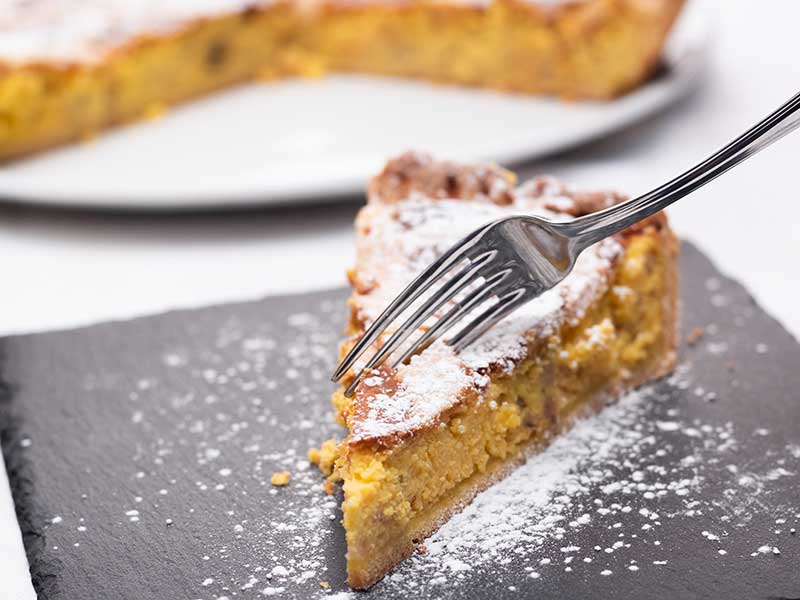
MAKE THE CRUST:
Mix the flour and sugar together by pulsing in a food processor. Then add the lard or butter and pulse until you have a sand like texture. Then add the egg yolks and mix again until the dough forms a ball, adding a bit of water, spoonful by spoonful, if need be. Cover the dough ball with plastic wrap and place in the fridge to chill for at least 30 minutes or until needed.
ROLL OUT THE DOUGH AND LINE THE PIE PLATE:

Take the dough out of the fridge. Take about 2/3 of the dough and roll it out into a round. To do this, I like to form the dough into a ball, flour it to avoid sticking, then beat it out flat with a rolling pin first, turning it around, then over, to get a fairly even round disk. Then I begin to actually roll it out flat. The round should be big enough, of course, to line the inside of your pie plate.
Roll the round of dough up with your rolling pin, the roll it out on top of a pie plate, which you will have greased well with a knob of lard or butter. (See Notes below about pie plate sizes). Using your fingers, make sure that the crust adheres to the sides. Cut off any excess dough that is hanging over the sides. (NB: A classic pastiera does not have any trimming around the edges).
FILL THE PIE PLATE AND LAY OUT THE LATTICE TOPPING:
Pour the filling into the pie plate, taking care not to fill the pastry shell to the very top, since the filling will swell during baking.
Roll out the remaining 1/3 of the dough, then cut into strips. Lay the strips over the filling in a diamond-shaped (not square) lattice pattern. Press the strips gently into the shell and cut off any excess dough.
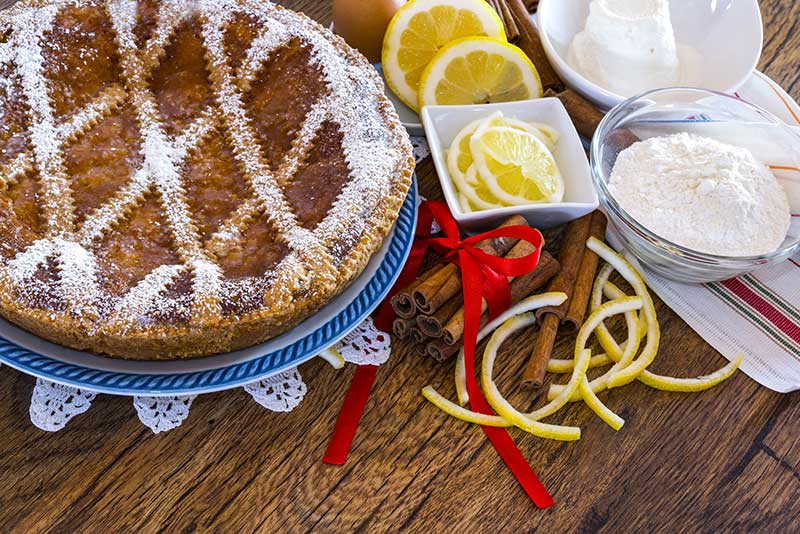
BAKE:
Place the pastiera in a moderate hot oven (190C/375F) for about an hour, until the filling is cooked through and the top has browned nicely. Check on it from time to time. If the pastiera is browning too quickly and looks like it might burn, you can cover it loosely with foil. If, on the other hand, an hour has passed and it’s not a brown as you’d like, turn up the heat to 200C/400F and let it bake for another 15 minutes or so. (You can also run it under a broiler, but take care as the high-fat content in the pastry means it will burn easily if left unattended).
COOL AND SERVE:
Let the pastiera cool completely. If you have the time, let it rest overnight. Serve, straight from the pie plate, dusted with confectioner’s sugar.
Notes
As mentioned, one of the ingredients that make a pastiera a pastiera—and not simply an Italian cheesecake—is the grano cotto or pre-cooked wheat berry. In Italy these days, grano cotto is sold commercially, in large jars. You may be able to find it in finer Italian specialty shops. You can also buy it online. The quality is generally excellent and it saves a great deal of time.
Otherwise, you can purchase dried wheat berries and cook them yourself, the old fashioned way. But beware of the kind you’re buying. The only wheat berries I can find in my local supermarket are “hard red winter wheat berries,” which won’t do for this recipe, as they don’t acquire the correct creamy, porridge-like texture. And they really are red, which won’t do at all. (I tried it so you don’t have to…).
Many traditional recipes said you needed to soak wheat berries for three days before cooking them—which meant you needed to begin making your pastiera a full six days before you wanted to eat it. Some even talks about old time Neapolitans soaking them for two weeks. But these days wheat berries don’t need all that soaking. An overnight soak will do fine, and some sources say you needn’t soak them at all. Boil them until tender, usually about an hour and a half, before using them as you would grano cotto in the above recipe.
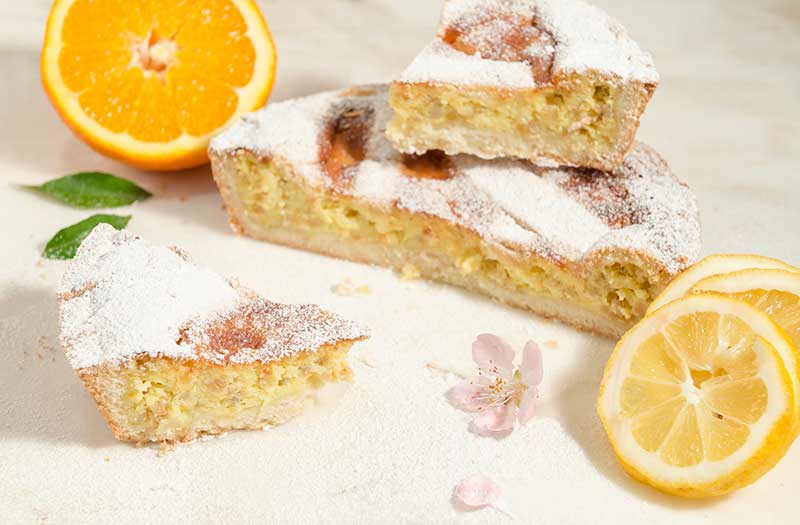
If you can’t find dried wheat berries, I’ve gotten perfectly acceptable results with pearled barley. And they say that farro also works well, although I haven’t tried it myself.
Other “exotic” ingredients
The other “exotic” ingredient you will need for your pastiera is orange blossom water. I would venture that if you have a Middle Eastern or North African market in your area, they would carry it. Otherwise, it, too, can be purchased online. Some recipes call for substitutes such as grated orange peel or orange extract. Neither quite does the trick, if you ask me. Orange blossom water provides a heady perfume that has no real substitute. Truly, you can’t make a proper pastiera without it, although you’d certainly have a very tasty pie. I recommend you use it with discretion, as its strong aroma easily becomes overpowering.
The candied orange and citron peel can also be hard to come by, although supermarkets will sometimes carry them around Christmas time, for making fruitcake. You can also find them online. Or make them yourself, if you have the patience. You can also simply leave them out if you like.
Serving your pastiera
There is a typical pie plate used in Naples for making pastiera. It is very much like your typical US pie plate, but it is lipless and slightly wider than the standard 9″. If you’re using a US pie plate, you’re likely to wind up with a little extra filling following the measurements above, depending on how deep your plate is. But no worries, it’s the cook’s prerogative to enjoy a bit of the raw filling when no one’s looking. It’s quite tasty in its own right!
Typically, a pastiera is served “family style” directly from the pie plate. If you want a more elegant presentation, however, you can bake your pastiera in a springform baking pan and unmold it before serving.
Variations
There are all sorts of subtle and not so subtle variations among recipes for pastiera. The basic ingredients and method remain the same, but the measurements can vary tremendously. Today’s recipe is my personal version, developed over time to suit my tastes. I’ve radically reduced the amount of sugar you’ll find in most recipes. Classic recipes call for as much as double the sugar called for here, in both the filing and the crust. I find that cloyingly sweet. But if you have a sweet tooth, you could up the sugar, perhaps by 50% to start with.
I’ve also increased the amount of wheat berries—some recipes calls for only half this amount—and reduced the number of eggs. I’ve had trouble in the past with soft, almost liquid fillings too flimsy to hold up the lattice topping. These measurements eliminate that problem. And I like the rather chewy, slightly crumbly texture you get this way.
If you want a less rustic texture, you can purée some or even all of the wheat berries. If you want a more solid filling, you can add another egg or two. Some recipes have you separate the eggs and whip the whites, which are folded into the filling mixture just before baking. Other recipes call for a combination of two whole eggs and two yolks rather than 3 whole eggs. Finally, one common variation has you add a goodly amount of crema pasticcera to the filling.
The egg and fat content of the crust also varies quite a bit from recipe to recipe. I liked the result I got from the measurements given here. The high fat content gives it a nice flaky quality.
Post Scriptum
Leftover pastiera is enjoyed for days and even weeks after it’s baked, often with morning coffee, which is exactly what I’m doing as I write these lines. And with the arrival of commercially made grano cotto, pastiera has become a year-round treat, even if it retains its close associations with the Easter season. So go ahead and enjoy this Neapolitan treat any time you feel like it.
Frank is a lawyer with a true passion for cooking and sharing food with the people he loves. He inherited his love for Italian cuisine and culinary tradition from his grandmother, nonna Angelina, to whom he dedicated his culinary blog, Memorie di Angelina: www.memoriediangelina.com
Non è ancora Pasqua, ma questo non significa che non possiamo farci una chiacchierata sulla Pastiera – il più tradizionale dolce pasquale napoletano – e imparare a prepararla!
Questa pastiera ai frutti di bosco e ricotta è meravigliosamente profumata ai fiori d’arancio, alla cannella e ai canditi, ed è una sorta di versione non plus ultra della normale torta di ricotta.
La Pastiera non è particolarmente difficile da fare, ma richiede alcuni ingredienti “esotici” che non si trovano in un tipico supermercato fuori dall’Italia, come il grano cotto (chicchi di grano precotti) e l’acqua ai fiori d’arancio. Anche i canditi possono essere difficili da trovare.
Ma ci sono fonti a cui attingere e un po’ di lavoro da fare. (Vedi note per i dettagli).
Una vera Pastiera richiede anche un po’ di pazienza. Di solito, si inizia a prepararla il Venerdì Santo, quando si prepara il ripieno e lo si lascia riposare per una notte. In realtà è il sabato che si prepara e si cuoce la Pastiera e la si lascia riposare per tutta la notte, prima di tuffarcisi dentro la domenica di Pasqua. Certo, si può fare tutto in un giorno, ma suggerisco comunque di fare la Pastiera il giorno prima, o almeno la mattina per consumarla nel pomeriggio. Il riposo ne migliora davvero il sapore.
Ingredienti
Preparare una pastiera
Per il grano cotto:
– 1 vasetto da 550 g di grano cotto (o chicchi di grano o di orzo pre-bollito, vedi Note)
– 250 ml (1 tazza) di latte
– Un cucchiaio colmo di zucchero
– buccia di 1/2 arancia
– Una goccia di estratto di vaniglia
– Una noce di lardo o di burro
Per il ripieno alla crema di ricotta:
– 400g (o un contenitore da 15 oz) di ricotta
– 150-200g (5-7 oz) di zucchero, o di più a piacere
– 3 uova
– Un pizzico di cannella
– Qualche goccia di estratto di vaniglia
– Qualche goccia d’acqua di fiori d’arancio, a piacere
– 75-100g (2,5-3,5 oz) di buccia d’arancia e/o di cedro candito
Per la crosta esterna:
– 300g (10-1/2 oz) di farina “OO” (o farina di pasticceria)
– 75g (2,5 oz) di zucchero
– 150g (5 oz) di strutto (o burro)
– 3 tuorli d’uovo
Per servire:
– Zucchero da pasticceria
Istruzioni
CUOCERE IL GRANO COTTO:
Aggiungere il grano cotto in una casseruola, insieme agli altri ingredienti indicati, a fuoco basso. Portare a ebollizione e cuocere, mescolando spesso, fino a quando il composto diventa cremoso e farinoso, di solito circa 5-10 minuti. Spegnere il fuoco e lasciare raffreddare completamente il composto.
FARE IL RIPIENO:
Versare la ricotta in una grande terrina. Aggiungere lo zucchero e sbattere energicamente fino a quando lo zucchero non sarà ben incorporato e il composto piuttosto spumoso. Mescolare anche le uova, una ad una. A questo punto aggiungere il grano cotto raffreddato, girandolo nella crema di ricotta fino a quando non sarà ben incorporato. Aggiungere la cannella, la vaniglia e qualche goccia di acqua di fiori d’arancio. Assaggiare e aggiustare il condimento. Aggiungere altra acqua di fiori d’arancio se si desidera un ripieno più profumato, tenendo presente che la sua intensità diminuirà in cottura. Se avete tempo, lasciare riposare questa miscela in frigorifero per una notte. Altrimenti, basteranno anche poche ore.
FARE LA TORTA:
Mescolare la farina e lo zucchero insieme usando un robot da cucina. Poi aggiungere lo strutto o il burro e mescolare fino ad ottenere una consistenza simile alla sabbia. Poi aggiungere i tuorli d’uovo e mescolare di nuovo fino a formare una palla, aggiungendo un po’ d’acqua, cucchiaio per cucchiaio, se necessario. Coprire la palla di pasta con un involucro di plastica e metterla in frigorifero a raffreddare per almeno 30 minuti o fino al bisogno.
STENDERE LA PASTA E FODERARE LA TORTIERA:
Togliere la pasta dal frigorifero. Prendere circa 2/3 della pasta e stenderla in un tondo. Per fare questo, mi piace dare alla pasta la forma di una palla, infarinarla per evitare che si attacchi, poi stenderla con il mattarello prima su un lato, girandola, poi al contrario, per ottenere un disco abbastanza uniforme e rotondo. Poi comincio a stenderlo in modo da appiattirlo. Il tondo dovrebbe essere abbastanza grande, naturalmente, per foderare l’interno della tortiera.
Stendete il rotolo di pasta con il mattarello e stendetelo sopra una tortiera che avrete ben unto con una noce di lardo o di burro. (Vedi le note qui sotto sulle dimensioni della tortiera). Con le dita, assicuratevi che la crosta aderisca ai lati. Tagliate la pasta in eccesso che pende sui lati. (N.B.: una pastiera classica non ha alcuna guarnizione intorno ai bordi).
RIEMPIRE IL PIATTO DELLA PASTIERA E STENDERE IL RETICOLO DI COPERTURA:
Versare il ripieno nel piatto da torta, facendo attenzione a non riempire l’involucro della pasta fino in cima, poiché il ripieno si gonfierà durante la cottura.
Stendere il restante 1/3 della pasta, quindi tagliarlo a strisce. Stendere le strisce sul ripieno in un reticolo a forma di diamante (non quadrato). Premere delicatamente le strisce e tagliare l’impasto in eccesso.
CUOCERE:
Mettere la pastiera in un forno moderatamente caldo (190C/375F) per circa un’ora, fino a quando il ripieno non sarà cotto a fondo e la parte superiore sarà ben dorata. Controllare di tanto in tanto. Se la pastiera si brunisce troppo velocemente e sembra che possa bruciare, potete coprirla con un foglio di carta stagnola. Se invece è passata un’ora e non è marrone come vorreste, alzate il fuoco a 200C/400F e lasciate cuocere per altri 15 minuti circa. (Potete anche farla passare sotto un grill, ma fate attenzione perché l’alto contenuto di grassi nella pasta fa sì che si brucerà facilmente se lasciata incustodita).
RAFFREDDARE E SERVIRE:
Lasciate raffreddare completamente la pastiera. Se avete tempo, lasciatela riposare per una notte. Servite, direttamente dal piatto della pastiera, spolverata con lo zucchero di pasticceria.
Come detto, uno degli ingredienti che fanno una vera Pastiera – e non semplicemente una cheesecake italiana – è il grano cotto o i chicchi di grano precotti. Oggi in Italia il grano cotto viene venduto commercialmente in vasetti di grandi dimensioni. Potreste trovarlo nei negozi gourmet di specialità italiane. È anche possibile acquistarlo online. La qualità è generalmente eccellente e fa risparmiare molto tempo.
Altrimenti, potete acquistare i chicchi di grano secchi e cucinarli voi stessi, alla vecchia maniera. Ma attenzione al tipo che si acquista. Gli unici chicchi di grano che posso trovare nel mio supermercato locale sono i “chicchi rossi di grano duro invernale”, che non vanno bene per questa ricetta, in quanto non acquisiscono la giusta consistenza cremosa, simile al porridge. E sono davvero rossi, il che non va affatto bene. (L’ho provato io per voi…).
Molte ricette tradizionali dicono che bisogna mettere a bagno i chicchi di grano per tre giorni prima di cucinarli, il che significa che bisogna iniziare a fare la Pastiera ben sei giorni prima di mangiarla. Alcuni parlano anche di vecchi tempi napoletani quando si mettevano a bagno per due settimane. Ma oggigiorno i chicchi di grano non hanno bisogno di tutto questo ammollo. Un ammollo notturno andrà bene, e alcune fonti dicono che non c’è bisogno di ammollo. Fateli bollire fino a quando saranno teneri, di solito circa un’ora e mezza, prima di usarli come il grano cotto nella ricetta di cui sopra.
Se non trovate i chicchi di grano secco, ho ottenuto risultati perfettamente accettabili con l’orzo perlato. E dicono che anche il farro funzioni bene, anche se io non l’ho provato.
Altri ingredienti “esotici”
L’altro ingrediente “esotico” di cui avrete bisogno per la vostra Pastiera è l’acqua di fiori d’arancio. Se c’è un mercato mediorientale o nordafricano nella vostra zona, lo troverete da loro. Altrimenti, anche questa può essere acquistata online. Alcune ricette prevedono sostituti come la buccia d’arancia grattugiata o l’estratto d’arancia. Non è la stessa cosa, se volete saperlo. L’acqua di fiori d’arancio fornisce un profumo inebriante che non ha paragoni. In realtà, non si può fare una Pastiera vera e propria senza di essa, anche se sicuramente si avrebbe una torta molto gustosa. Vi consiglio di usarla con discrezione, perché il suo forte aroma diventa facilmente eccessivo.
Anche le scorze d’arancia e di cedro candite possono essere difficili da trovare, anche se i supermercati a volte le hanno per il periodo natalizio, per fare le torte di frutta. Le potete trovare anche online. O farle da soli, se si ha la pazienza. Se volete, potete anche semplicemente escluderli.
Servire la Pastiera
C’è una tipica tortiera usata a Napoli per fare la pastiera. E’ molto simile al tipico piatto americano da torta, ma è liscia e leggermente più larga del 9″ standard. Se si utilizza un piatto da torta americano, è probabile che si concluda con un po’ di riempimento in più a seguito delle misure di cui sopra, a seconda di quanto è profondo il vostro piatto. Ma non preoccupatevi, è prerogativa del cuoco godersi un po’ del ripieno crudo quando nessuno guarda. È piuttosto gustoso!
In genere, una pastiera viene servita “in famiglia” direttamente dalla tortiera. Se volete una presentazione più elegante, però, potete cuocere la pastiera in una teglia a molla e sformarla prima di servirla.
Variazioni
Ci sono ogni sorta variazioni più o meno importanti tra le ricette della Pastiera. Gli ingredienti di base e il metodo rimangono gli stessi, ma le misure possono variare enormemente. La ricetta di oggi è la mia versione personale, sviluppata nel tempo per soddisfare i miei gusti. Ho ridotto radicalmente la quantità di zucchero che troverete nella maggior parte delle ricette. Le ricette classiche richiedono il doppio dello zucchero qui usato, sia nell’impasto che nella crosta. Lo trovo stucchevolmente dolce. Ma se avete un debole per i dolci, potreste aumentare lo zucchero, anche del 50%.
Ho anche aumentato la quantità di chicchi di grano – alcune ricette richiedono solo la metà di questa quantità – e ridotto il numero di uova. In passato ho avuto problemi con i ripieni morbidi, quasi liquidi, troppo inconsistenti per reggere la copertura a reticolo. Queste misure eliminano il problema. E mi piace la consistenza piuttosto gommosa e leggermente friabile che si ottiene in questo modo.
Se si vuole una consistenza meno rustica, si possono eliminare alcuni chicchi di grano o anche tutti. Se volete un ripieno più solido, potete aggiungere un altro uovo o due. Alcune ricette prevedono di separare le uova e di montare gli albumi, che vengono uniti nell’impasto del ripieno appena prima della cottura. Altre ricette richiedono una combinazione di due uova intere e due tuorli piuttosto che di 3 uova intere. Infine, una variante comune prevede l’aggiunta di una buona quantità di crema pasticcera al ripieno.
Anche il contenuto di uova e di grassi della crosta varia molto da una ricetta all’altra. Mi è piaciuto il risultato che ho ottenuto con le misure qui riportate. L’alto contenuto di grassi gli conferisce una bella qualità friabile.
Post Scriptum
Gli avanzi della Pastiera si godono per giorni e anche settimane dopo la cottura, spesso con il caffè del mattino, che è esattamente quello che sto facendo mentre scrivo queste righe. E con l’arrivo del grano cotto fatto in commercio, la Pastiera è diventata una delizia per tutto l’anno, anche se mantiene i suoi stretti legami con il periodo pasquale. Quindi andate avanti e godetevi questa delizia napoletana ogni volta che ne avete voglia.







